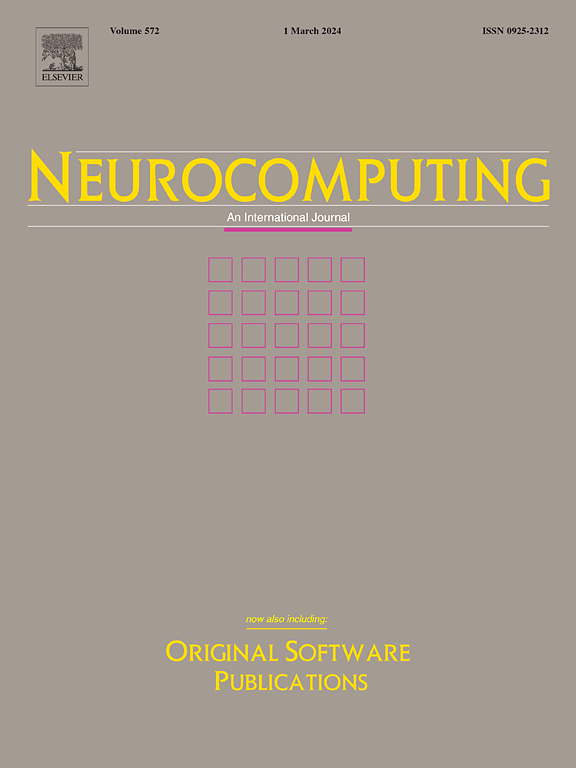Pick and mix reliable pseudo labels for scribble-supervised medical image segmentation
IF 5.5
2区 计算机科学
Q1 COMPUTER SCIENCE, ARTIFICIAL INTELLIGENCE
引用次数: 0
Abstract
Scribble-supervised segmentation methods have attracted significant attention in the field of medical imaging because of their potential to alleviate the data annotation burden. However, these methods often underperform due to a lack of sufficient supervision. Various methods have attempted to enrich the supervisory signals in different ways, including mixing pseudo labels from different samples (referred as Mixup-based method). However, these methods primarily focus on the quantity of enriched supervisory signals, disregarding their quality. This oversight presents a major drawback in that low-quality signals are often contaminated with the noise, thus can lead to undermine performance. Therefore, it is crucial to not only introduce diverse supervisory signals but also ensure their quality and reliability. Motivated by this understanding, we propose a new framework named Pick & Mix, which builds upon the Mixup-based method. In the first step, we leverage the consistency of intra-class features to assess the reliability of pseudo-labels. To enhance the quality of pseudo labels, we assign lower weights to those unreliable pseudo-labels to mitigate the noise effect in the training process. Furthermore, we utilize a threshold to pick reliable pseudo-labels based on their reliability score. In the second step, we mix the reliable pseudo-labels from various samples and generate corresponding mixed images to provide richer supervisory signals for model training. In this manner, we enhance the quality of supervisory signals by generating and picking reliable ones, as well as enrich the quantity of these signals through a process of mixing. Finally, we evaluated our framework on three publicly available datasets: ACDC, MSCMRseg, and BraTS2020. The experimental results demonstrate that our approach achieves state-of-the-art performance.
挑选和混合可靠的伪标签潦草监督医学图像分割
涂鸦监督分割方法因其减轻数据标注负担的潜力而在医学成像领域引起了极大的关注。然而,由于缺乏足够的监督,这些方法往往表现不佳。各种方法试图以不同的方式丰富监控信号,包括混合来自不同样本的伪标签(称为Mixup-based method)。然而,这些方法主要关注的是丰富的监控信号的数量,而忽略了它们的质量。这种疏忽带来了一个主要的缺点,即低质量的信号经常被噪声污染,从而可能导致性能下降。因此,不仅要引入多样化的监控信号,还要保证其质量和可靠性。基于这种理解,我们提出了一个名为Pick &;Mix,它建立在基于mixup的方法之上。在第一步,我们利用类内特征的一致性来评估伪标签的可靠性。为了提高伪标签的质量,我们对不可靠的伪标签赋予较低的权值,以减轻训练过程中的噪声影响。此外,我们利用一个阈值来选择可靠的伪标签基于他们的可靠性得分。第二步,我们将来自不同样本的可靠伪标签混合,生成相应的混合图像,为模型训练提供更丰富的监督信号。这样,我们通过产生和挑选可靠的监控信号来提高监控信号的质量,并通过混频过程来丰富这些信号的数量。最后,我们在三个公开可用的数据集上评估了我们的框架:ACDC、MSCMRseg和BraTS2020。实验结果表明,我们的方法达到了最先进的性能。
本文章由计算机程序翻译,如有差异,请以英文原文为准。
求助全文
约1分钟内获得全文
求助全文
来源期刊

Neurocomputing
工程技术-计算机:人工智能
CiteScore
13.10
自引率
10.00%
发文量
1382
审稿时长
70 days
期刊介绍:
Neurocomputing publishes articles describing recent fundamental contributions in the field of neurocomputing. Neurocomputing theory, practice and applications are the essential topics being covered.
 求助内容:
求助内容: 应助结果提醒方式:
应助结果提醒方式:


